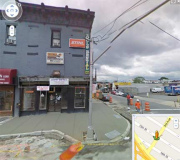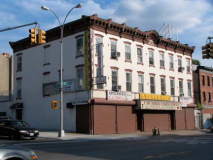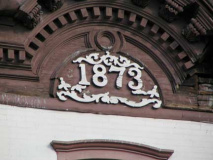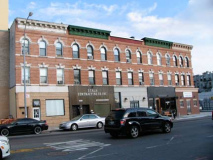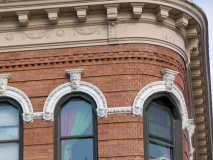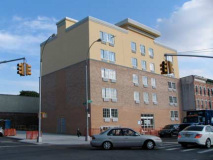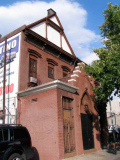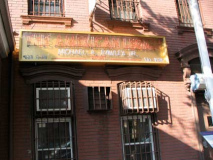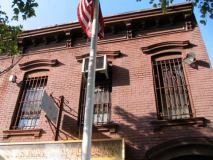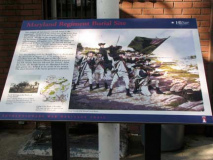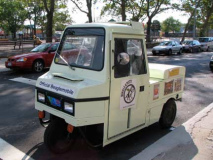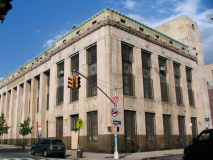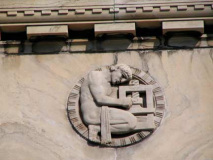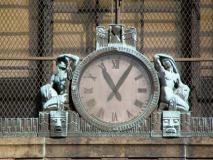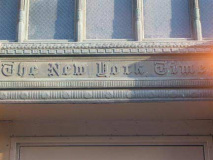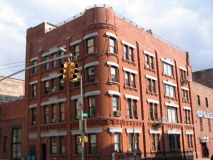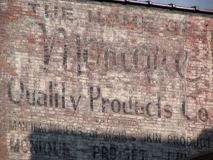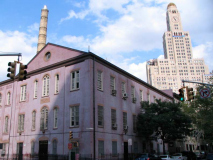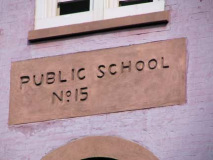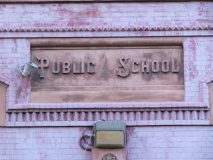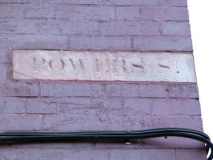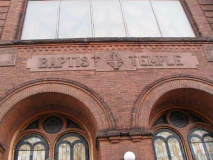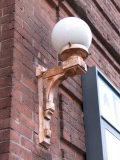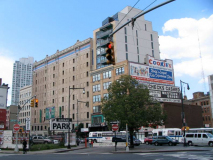One evening in July I had just gotten out of the dentist in downtown Brooklyn — and I am going in and getting out of oral surgeons’ and dentists’ offices a great deal this year; a high starch diet for over 50 years will do that — when I decided to take a walk down 3rd Avenue, to see what was there (I had previously explored Brooklyn’s 4th and 5th Avenues). That’s the reason I walk anywhere, at any rate. I began at Flatbush and 3rd and called it a night at Prospect Avenue. Subsequently I walked the remainder of 3rd Avenue from Shore Road to Hamilton Avenue, and the fruits of that labor have been demonstrated on my 3rd Avenue pages Part 1 and Part 2. This is the oldest section of 3rd Avenue and while it’s the grittiest and dirtiest section, it also boasts the most venerable buildings on the entire route.
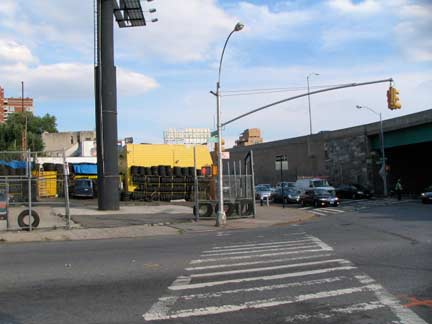
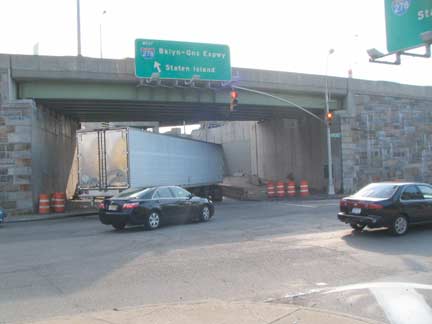
The Gowanus Expressway turns off 3rd Avenue and travels high over Hamilton Avenue, while 3rd is bridged by the Prospect Expressway, a tributary of the Gowanus that runs south through Park Slope and Windsor Terrace to Church Avenue and Ocean Parkway; the parkway accepts the southbound Prospect Expressway traffic, except trucks, which must exit at Church Avenue before entering Ocean Parkway. At just 2 miles long, it’s one of NYC’s shortest expressways and was built from 1951 to 1960 from the Gowanus south. You would have to think Robert Moses would have loved to extend the expressway south along Ocean Parkway’s route, and in 1963 he proposed just that as a link to a proposed Cross Brooklyn Expressway. Neither of these proposals were funded — adding to Moses’ uncharacteristic losing streak in the 1960s, after the bitter failure of his Lower Manhattan Expressway to gain approval, either.
Both Hamilton and Prospect Avenues begin here, Hamilton running northwest to the water’s edge at Buttermilk Channel, Prospect Avenue southeast then south to Ocean Parkway.
One of the oldest buildings on 3rd Avenue can be found on the east side of the street between 15th and 16th Street — its date is emblazoned on the roofline corbelling. It’s held up well over 127 years and counting as of 2010.
Meanwhile another venerable building holds down the SW corner of 3rd and 15th. 3rd Avenue was in the midst of some curb extensions, likely as a means of traffic speed curtailment.
Between 13th and 14th on the east side of 3rd Avenue is another fine group of attached brick apartment buildings, this group built in 1909, as the date on the rounded corner shows. Note the different window treatments on the 2nd and 3rd floors, and the gods’ faces above each arched window.
There’s a new excrescence at 13th and 3rd. It looks like a Quinta Inn (see below for something similar)
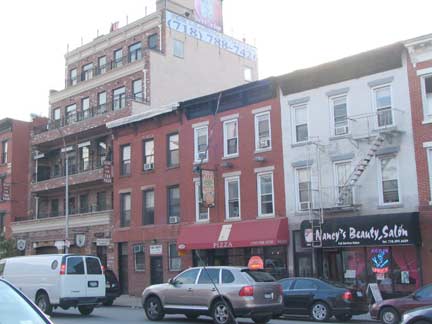
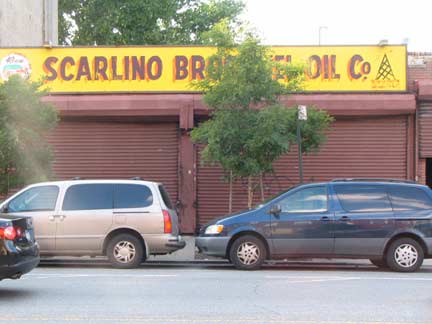
Between 12th and 13th, which doesn’t belong and why?
Great hand-drawn sign for Scarlino Brothers Fuel Oil complete with an oil well tower.
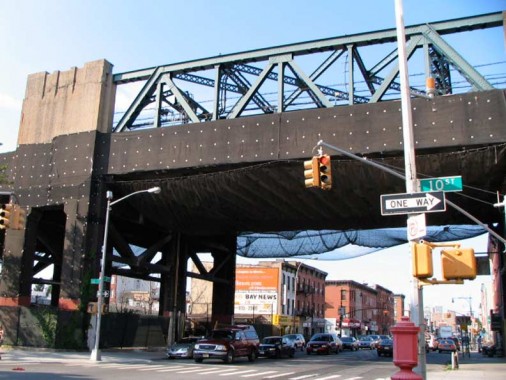
Elevated train, IND-style. This is the only el structure built by the Independent Subway, which built exclusively in tunnels under 6th and 8th Avenues in Manhattan, the Grand Concourse in the Bronx, and Queens Boulevard in Queens. The el was built to take trains nearly 90 feet over the Gowanus Canal, rather than build a deep tunnel under it. This route currently takes 6th Avenue Line trains (the F train) to Coney Island via a connection with the Culver Line further south in Brooklyn. The el quickly retreats back underground once it reaches the hill in Park Slope.
The viaduct is steel with concrete cladding, currently being shored up after over 70 years of constant pounding. Other BMT and IRT elevateds have concrete cladded stations at important intersections, but this IND viaduct is concrete cladded for its entire time outdoors.
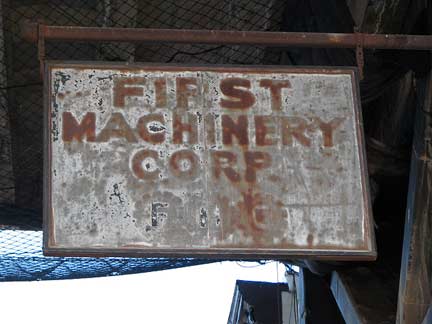
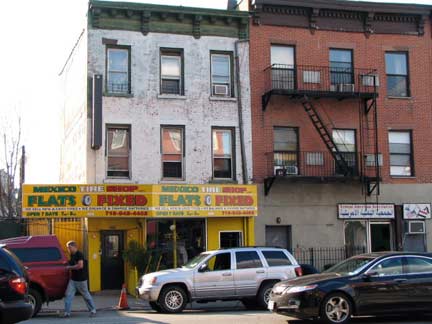
All manner of strange things can be found lurking under els, like this pressed metal sign that has been there perhaps 50 or 60 years. On the west side of 3rd is a flat tire fixer.
What Brave Fellows
American Legion Michael A. Rawley Post 1636, 9th Street just south of 3rd Avenue, is an unassuming small brick building with a Flemish style stepped roof. A historical plaque here marks the burial of the “Maryland 400, “the regiment that fought off British soldiers suring the Battle of Brooklyn in August 1776, allowing Washington’s troops an opportunity to retreat and regroup. The British buried the Maryland regiment in the vicinity; the exact location is unknown. A New York State historic plaque had earlier been placed here in 1952. An annual parade is held for the Marylanders in Park Slope.
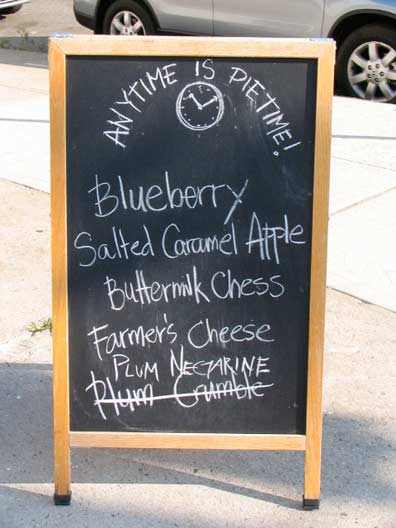
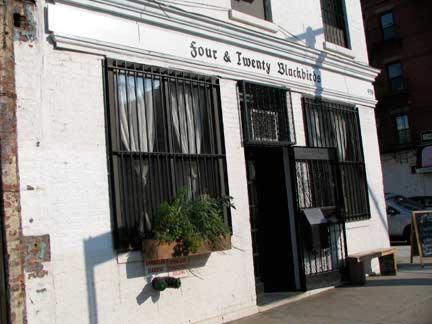
Cupcakes are five minutes ago. Pies are where it’s at in the Terrific 2010s. Four and Twenty Blackbirds at 3rd and 8th is the new pie-ery in town. Some of the day’s goodies were on the chalkboard. If I lived around here, I’d quit my Hostess pie habit and come in here.
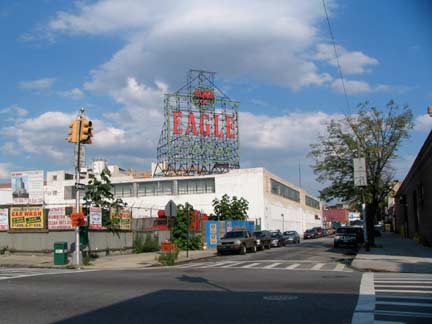
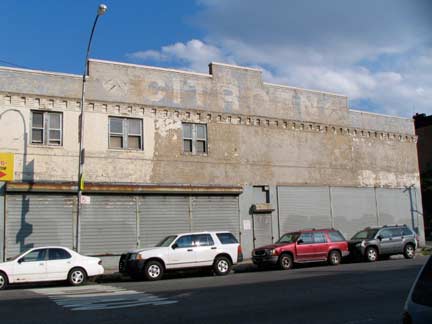
A pair of ghosts near 6th Street. Eagle is one of the many haberdasheries that succumbed to more casual living during the Swingin’ Sixties. As more men began to eschew suits, jackets and ties during all but strict business hours, clothing manufacturers had to adapt or die. One by one, Weber & Heilbroner, Rogers Peet, Robert Hall all succumbed. Many of their ads can still be found too, in faded ads on buildings in and surrounding Manhattan’s Garment District. The biggest remnant of the era when all guys wore hats is right here by the Gowanus Canal. Right: former dealership (I guess) for the import French Citroën auto.
More giant neon billboards nearby
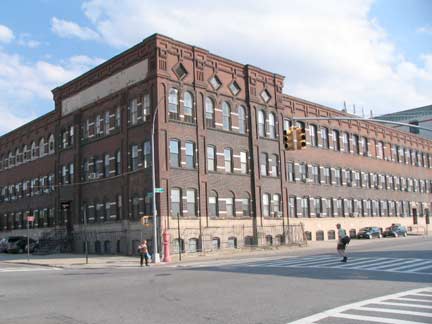
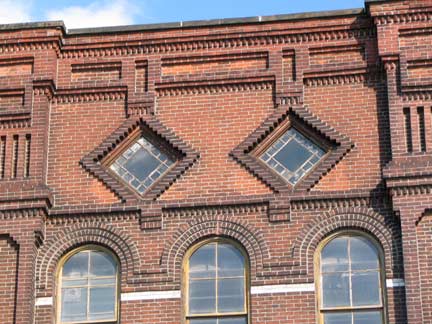
The intersection of 3rd Avenue and 3rd Street is an unlikely architecture mecca. At the SE corner is the magnificent brick American Can Company building, with its distinctive diamond shaped 4th floor windows with etched glass. From NYC’s Gowanus Canal Historic historic resources analysis:
The main corner section of the building was constructed ca. 1885, and in 1886 was occupied by the Somers Bros. Decorated Tinware Company, as indicated on a historic Sanborn map. By the 1920s, however, the structure was occupied by the American Can Company… The 5th Street basin of the Gowanus Canal formerly extended immediately south of the complex, and it is likely that the American Can Company utilized the canal for the transport of materials and goods.
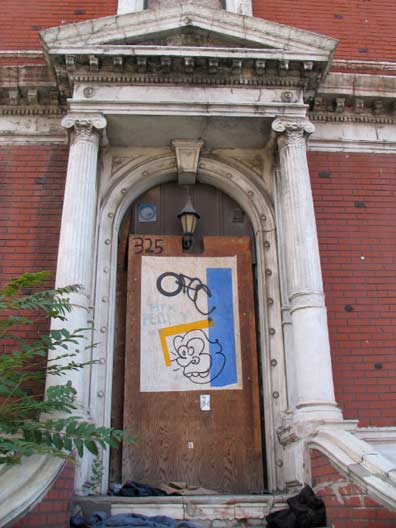
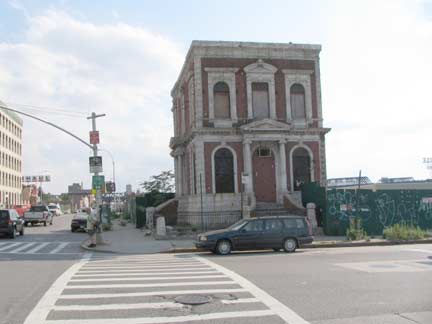
In many ways engineer Edwin Litchfield is the father of Park Slope, since, while converting Gowanus Creek into the Gowanus Canal beginning in the 1850s, the also purchased a full one third of all the land between the canal and what is now Prospect Park, eventually, along with other landowners, hiring architects to draw up lots and cut through streets. The opening of the Brooklyn Bridge in 1883 led to a housing boom and by 1900 many of the beautiful brownstone buildings we see today had been built.
Alone by a garbage-clogged side channel of the Gowanus Canal on the SE corner of a chemically contaminated expanse slated to become, of all things, a Whole Foods supermarket, stands the former home of the Brooklyn Improvement Company, founded by Litchfield for the express purpose of dredging the Gowanus Creek, then a fresh stream, and making it vessel-worthy. The building has been in decline for decades and its fate hinges on the fate of the surrounding lot, whether it becomes a Whole Foods or anything else.
More on Edwin Litchfield’s 3rd Street
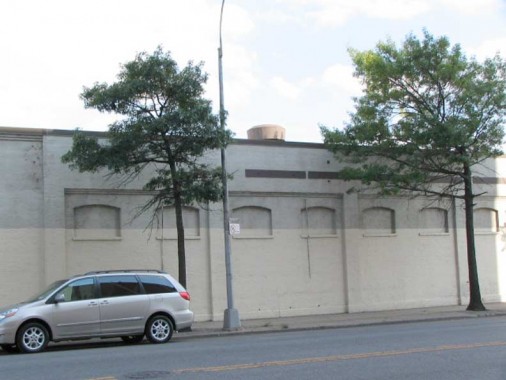
So, it appears that over the past decade, research has put to rest the idea that this brick wall on 3rd Avenue north of 3rd Street was ever part of a stadium in which the Brooklyn Dodgers played. A Brooklyn professional baseball team, though, once played within.
The New York Times reported in December 1912 that the Washington Park, where the Brooklyn Superbas (occasionally known as the Dodgers) played, had been demolished, and was clear on the nature of the buildings: The tearing down of the wooden grandstand and clubhouse at Washington Park to make way for new streets and apartment houses recalls Brooklyn’s thirty years of activity in baseball on or in the vicinity of the old grounds. The city had planned to extend Second Street through the lot, and this was even offered as an excuse for moving by Dodgers owner Charles Ebbets, but the extension never took place.
Photographic evidence suggests the wall was constructed in 1914 for the Brooklyn Tip Tops of the Federal League, which was in business for only two years from 1914-1915. A much larger edifice also remains from the Federal League era: Wrigley Field, which later became and is still the Chicago Cubs’ home.
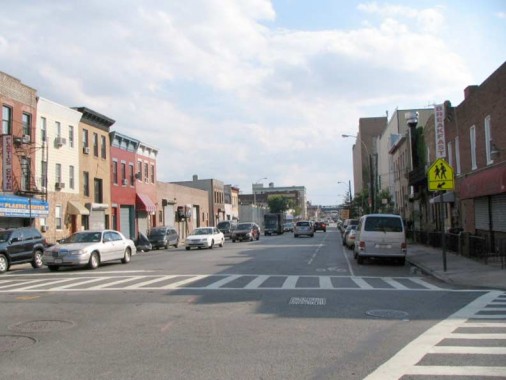
3rd Avenue and Carroll Street, looking south. 3rd Avenue, with its brother avenues 4th through 8th Avenues, takes a very slight jog to the southwest at Carroll Street. 18th Century surveyors and engineers likely did this to follow Brooklyn’s topography vis-a vis the western shore — eventually the avenues may have run too close to it had a correction not been made.
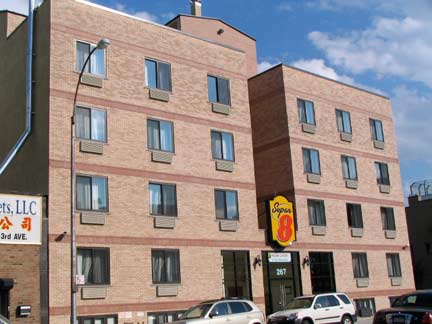
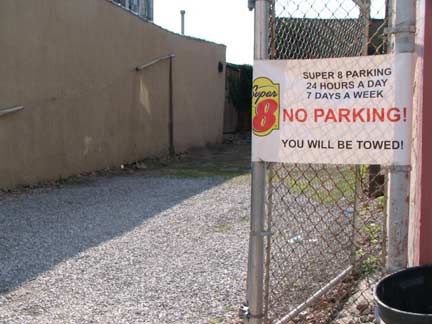
We have already seen a possible hotel going up at 13th Street, and here’s a Super 8 already open between President and Union Streets, complete with a non-valet parking lot across the street.
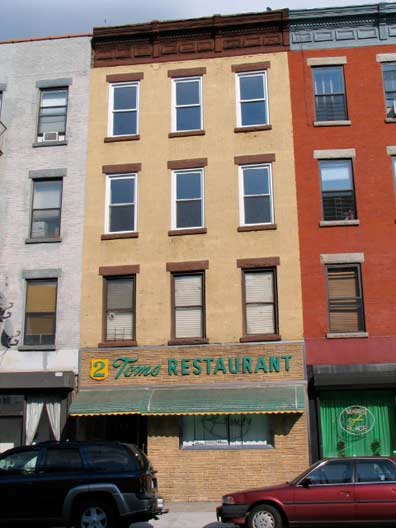
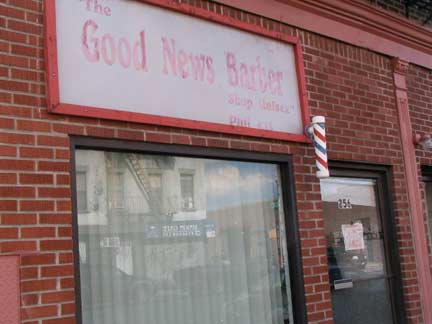
I remember going past 2 Toms Restaurant when I was a kid on my way to A&S on Fulton Street, riding the now-defunct B37 with my mother. The B37 has been replaced on this stretch of 3rd Avenue by the B103, which runs all the way to Canarsie!
The good news is he still has an old fashioned barber pole. The red color in barber poles comes from barbers’ former practice of bloodletting, thought to relieve illness or injury. Old-time barbers kept leeches in jars for this purpose. In medieval times, the clergy, surgeons and barbers could all perform surgery legally. The William Marvy Company produces barber poles exclusively, though this one looks homemade.
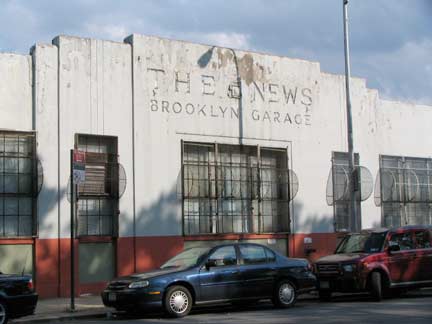
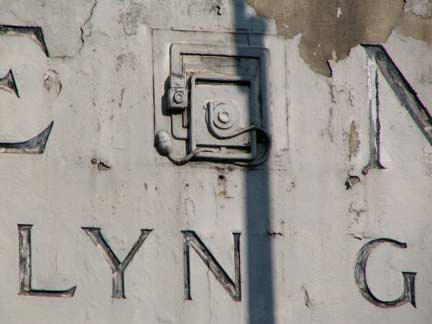
The New York Daily News formerly occupied this garage on 3rd Avenue between Degraw and Douglass Streets facing a park. The News still calls itself “New York’s Picture Newspaper” and has always had a camera as part of its logo. The modern logo is a stylized camera, but the old logo showed a classic model. My friend “Movie” Mike Olshan still uses a Speed Graphic. The Brooklyn School of the Arts, MS 447, and the Kalhil Gibran Academy now occupy the building.
Many of the older buildings on upper 3rd Avenue have been razed to make way for housing projects such as Wyckoff Gardens, seen in upper right photo. This 3 story brick factory building, now mixed use, is an exception. The older vertical sign advertises knitwear. The mural laments a child killed on a bike by a speeding car.
Someone fill me in about the “Beaglemobile” I found on the corner of 3rd and Douglass.
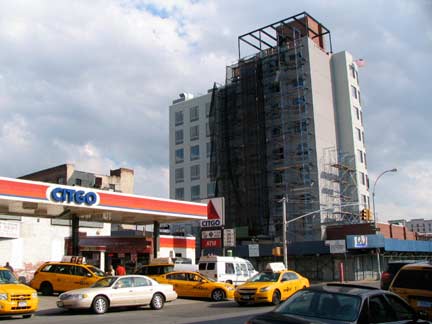
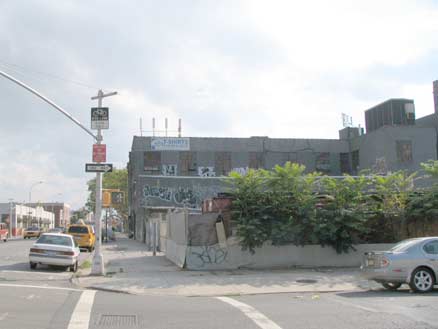
The Marriott Fairfield Inn is rising on 3rd Avenue between Butler and Douglass. Its north view is a Citgo gas station, it’s in spitting distance of Wyckoff Gardens, and the west view is of a barbed wire, weed-strewn lot. Oh well, you might see the Verrazano Bridge from one of the upper floors. They’re buying stock in the future, I suppose. There’s also a Comfort Inn on Butler between 3rd and Nevins.
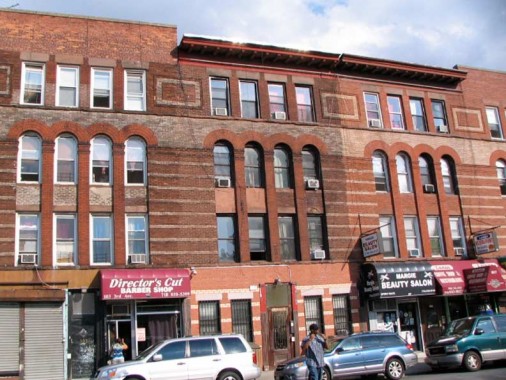
Nice stretch of apartments and storefronts facing Wyckoff Gardens between Bergen and St. Mark’s Place. What did they do to the rooflines left and right? And why did they do it?
Meanwhile back at The Times
59 3rd Avenue, a former New York Times printing press building, faces 3rd Avenue betweeen Pacific and Dean and has to be called one of Boerum Hill’s architectural gems. Brownstoner’s Montrose Morris:
…This building has been repurposed as school space, and is part of a complex housing the Math and Science Exploratory School, Brooklyn High School of the Arts and the Kahlil Gilbran School. The Arts HS is the only NYC public school to offer a program in historic preservation. The NY Times signage is still on the facade of this Classical temple. The large windows at street level along Third Ave allowed the public to watch the printing, collating and folding of the paper as it passed across the floor of the building. This area is now a gymnasium, a sensible reuse of open space. Kahn’s use of Art Deco motifs and styling takes the building to another level, making it one of the most interesting buildings in the Times Plaza area.
Ornamentation and fillips like this became passe after the streamlined International Style took over in the 1950s. Will they ever return?
Another beautiful piece of architecture on 3rd Avenue and Dean Street, but I also noticed the faded ad for Monique Quality Beauty products on the building behind it.
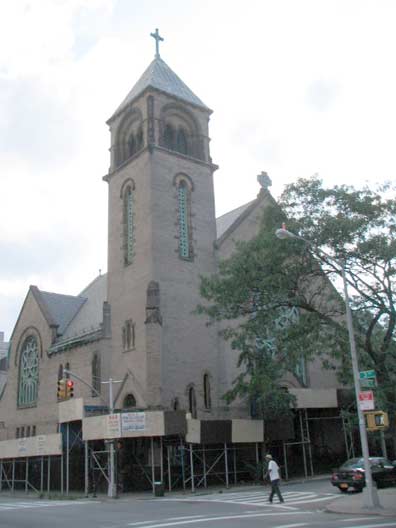
Bethlehem Lutheran Church, 3rd Avenue and Pacific St., constructed in 1894; it has been closed in a dispute between church members and hierarchy for over a year as of 2010. The corner mentions Isaiah 28:16:
therefore thus says the Lord God, See, I am laying in Zion a foundation stone, a tested stone, a precious cornerstone, a sure foundation: “One who trusts will not panic.”
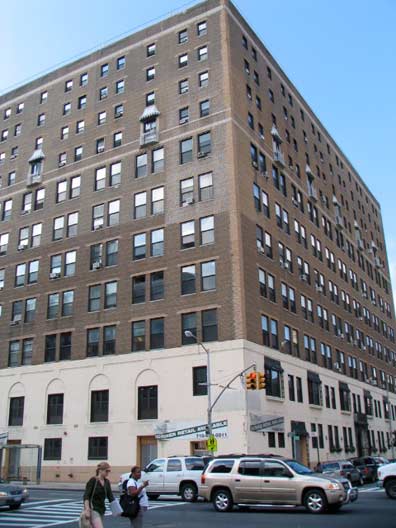
The former Young Women’s Christian Association building on the NW corner of 3rd and Atlantic Avenues has been converted to apartments.
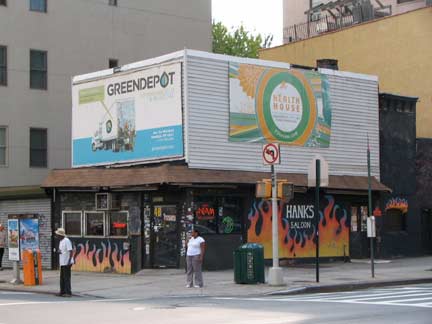
Hank’s Saloon, a longtime country-themed watering hole. The drinks are cheap, the bathroom is filthy, and there’s plenty of great punk and country music to be heard on the jukebox. Live bands of various quality play a couple of nights a week [gridskipper]
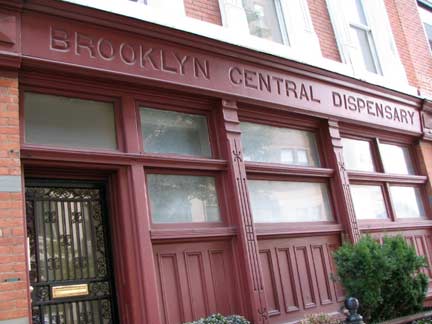
The Brooklyn Central Dispensary, 29 3rd Avenue between Atlantic Avenue and State Street, i.e. another curious curio, Once again Brownstoner’s Montrose Morris has the low-down:
The Bklyn Central Dispensary was a charitable medical organization founded in 1855, in a building on nearby Flatbush and Nevins. The facility provided free treatment and medicines to indigent patients. This new building opened to much fanfare in November of 1890. The Dispensary originally had the clinic on the ground floor, with a waiting room, exam and operating rooms and a pharmacy. The second floor had offices, a dentistís office, and rest rooms. The third floor housed the pharmacist and his wife, and the top floor, the ìjanitressî. The Dispensary treated over 14,000 patients in its first year in the space. Only the pharmacist and janitress collected salaries. Today, the building is co-ops.
3rd Avenue’s Oldest
The former PS 15 and later NYC Board of Education Certificating Unit and the Williamsburg Bank tower thrust competing, ah, fingers at the sky. This is likely the oldest building on 3rd Avenue (and State Street), having been built in 1840. It was given a red paint job a couple of decades ago that has long since faded to pink. It’s certainly time someone revitalized this venerable campaigner. In 1974 your webmaster got working papers here so I could work while still under 18 years old. I remember getting a physical exam by a bored doctor in a dark room.
You have to like the way “Public School No. 15” is etched above the second story arched window. It’s as if someone did it with their finger while the concrete was still wet. That might be what happened. A more advanced rendering is chiseled on the Schermerhorn Street side.

Before about 1880, 3rd Avenue from Flatbush Avenue to about Carroll Street was called Powers Street. It likely was changed to 3rd Avenue because there was another Powers Street in East Williamsburg (Brooklyn annexed the city of Williamsburg in 1855). This is the only remnant of 3rd Avenue’s Powers street days.
End or beginning of the road
The last stop on 3rd Avenue, or the first, depending on your point if view, is the 1917 Baptist Temple, 3rd Avenue and Schermerhorn Street.
The present Baptist Temple sanctuary (1918) has been host to many famous preachers, and contains windows made by Colonial Art Glass of Brooklyn from sketches by Corwyn Knapp Linson. Edward Morris Bowman, a founder of the American Guild of Organists, established the largest volunteer choir in turn-of-the century America, of which Alexandre Guilmant was an honorary member.
On the evening of July 7, 2010, a devastating three-alarm fire caused serious damage to the church interior and organ. NYC American Guild of Organists
Temple Square, 3rd Avenue, Flatbush Avenue, Lafayette Avenue and Schermerhorn Street. This is a somewhat rundown section of Flatbush Avenue that hasn’t seen the ongoing revitalization that, say, Flatbush and 4th Avenues have. For example, the lot on the left side has been undeveloped as long as I can remember. I suppose Temple Square’s turn will come.
9/19/10


